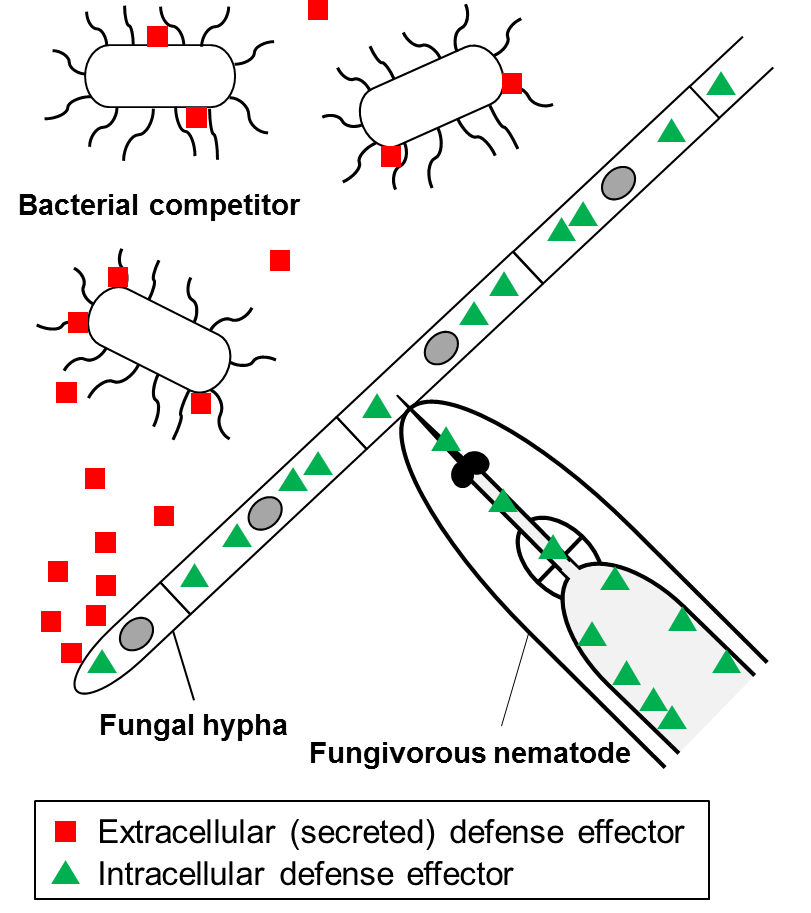Identification and characterization of novel fungal defense effectors against bacteria and animals
The most famous examples of fungal defense effector molecules against bacterial competitors and animal predators are the β-lactam antibiotic Penicillin produced by several ascomycetous molds including Penicillium chrysogenum, and alpha-Amanitin, a ribosomally synthesized cytotoxic peptide produced by various mushroom species including Amanita phalloides (death cap), respectively.
Current experiments aim at the identification and characterization of novel defense effector molecules (toxins) from fungi against bacterial competitors and animal predators. As a basis of our screens, we hypothesize (1) that defense effector molecules against bacteria are secreted and molecules against predators are intracellular (see Figure below), and (2) that the biosynthesis of defense effector molecules is tightly regulated, both in response to internal (developmental) cues and in response to external cues (challenge with the respective antagonists). Applied experimental methods include genomic, transcriptomic and proteomic analysis of fungi for discovery of novel effectors as well as heterologous production of candidate effectors in Escherichia coli and Pichia pastoris combined with biochemcial and toxicity assays for functional studies.

